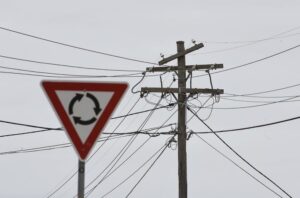The Australian Energy Market Operator is pushing for new markets to be created to encourage new technologies such as battery storage to help ensure system stability as more coal and gas fired generators leave the market.
In its annual Electricity Statement of Opportunities (ESOO) report, AEMO has canvassed various scenarios including a response to the Paris climate conference, which calls for major action on climate change and which is likely to see the accelerated withdrawal of coal fired generators in particular.
It warns that the failure to develop new markets that would encourage “ancillary services” could result in more blackouts – a theme enthusiastically picked up by the trigger-happy Murdoch media and others as they seek to question the accelerated deployment of renewable energy.
But AEMO’s warnings should be put in context. The AEMO is predicting, in the very worst-case scenario modelled in this report, that the risk of blackouts will increase by an extra 11 minutes a year for consumers in South Australia.

These are hardly catastrophic predictions, and hardly the economy-wrecking loss of power depicted in the media and the fossil fuel industry. At the moment, the standard it is required to meet in Australia is to to restrict blackouts to no more than 11 minutes per customer per year in any particular region.
No other country in the world has such high standards for reliability, and Australian consumers pay a hefty price for this in their consumer bills, particularly through the network costs.
In its worst case scenarios canvassed in this latest report – that with strong economic growth and the closure of an extra 1,380MW of coal power, over and above the 2,200MW to be closed at Liddell, the risk of blackout in South Australia in the next five years is increased from 11 minutes to 22 minutes per year, while in NSW it jumps to 35 minutes per year within the next decade.
In the low economic growths scenario, it envisages no increased reliability issues. In the neutral economic growth scenario, it says the risk of blackout may increase by an extra minute (yes, one whole minute) a year.
So AEMO’s warning of blackouts – as it describes in its detailed report – appears to have been deliberately provocative.
It justifies this because it wants to convince policy makers to act quickly – because as most recognise, the replacement of fossil fuel generation with renewables will be unstoppable, and could come quicker than expected. Coal withdrawals are likely to be more significant than those canvassed in this analysis.
And AEMO’s predictions apply not just to regions with high renewable energy penetration like South Australia, but also to Victoria and New South Wales, which have a much smaller share of renewable energy and are based largely around large brown and black coal generators.
The point of AEMO’s report is that the amount of generation is no longer the main issue facing the grid, because it clearly has more than enough … it is the quality of that generation, and ensuring that there is enough on the grid to maintain the stability of the network.
These services, it says, can be obtained through battery storage, demand response and generators. They can even be sourced from renewable energy plants, but that hasn’t been the case in Australia because there is no market to encourage it.
And in any case, Australia’s coal generation fleet is ageing, and much of it will need to be replaced over the next decade or two. AEMO is seeking to ensure that the technology is ready to replace it.
“As the NEM generation mix continues to keep pace with new technology and policy changes, future supply adequacy will depend on the availability and capability of new supply options providing electricity services when needed,” AEMO Chief Operating Officer Mike Cleary said in an accompany statement.
“AEMO is signalling potential future supply gaps in providing these important stability services, gaps which could be met through prospective new forms of electricity generation, or alternative technologies.”
“Possible solutions could include an increased interconnection across NEM regions, battery storage, and demand side management services.
AEMO says it has modelled the impact of withdrawing a further 1,360MW of coal-fired generation capacity to meet the COP21 commitment under AEMO’s neutral scenario, with results suggesting potential reliability breaches occurring in South Australia from 2019-20, and New South Wales and Victoria from 2025 onwards.
“These breaches would most likely occur when demand is high (usually between 3-8pm), coinciding with low wind and rooftop photovoltaic (PV) generation, and low levels of electricity supply imported from neighbouring regions.”








